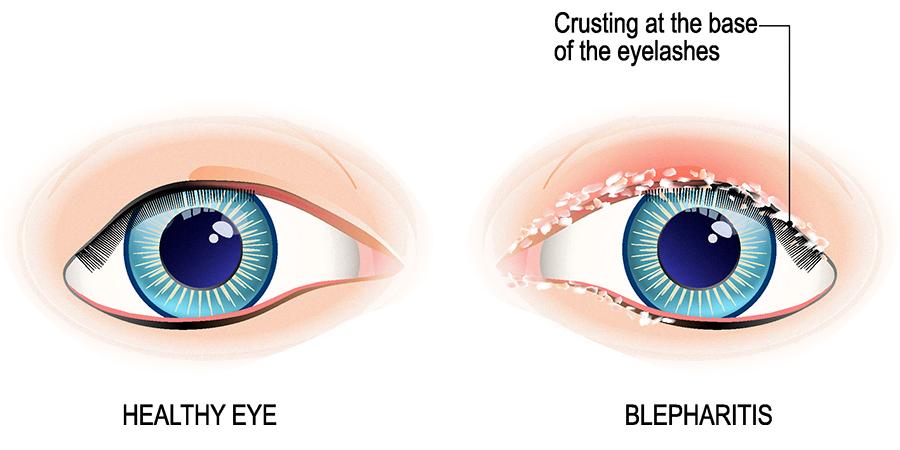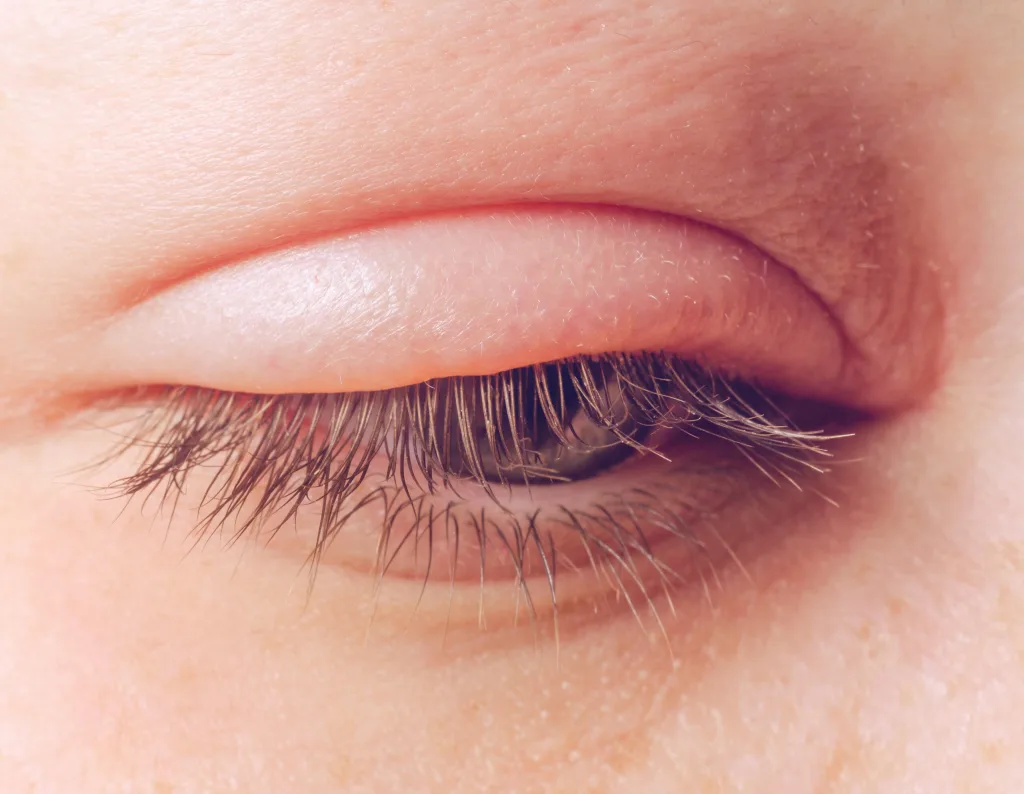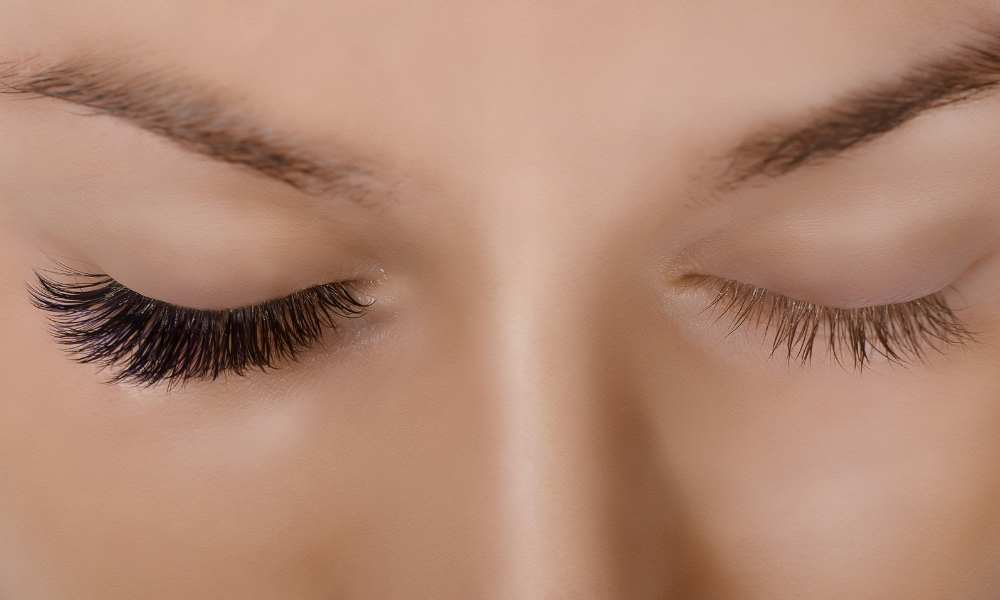Blepharitis is a common condition that can cause inflammation of the eyelids, resulting in a variety of uncomfortable symptoms. It’s particularly troublesome for those who wear eyelash extensions since the additional weight can put strain on already sensitive skin. Fortunately, there are steps you can take to manage blepharitis and prevent it from getting worse.
What is Blepharitis?
Blepharitis is an inflammation of the eyelids, usually caused by bacterial or fungal infections, allergies, or other irritants. People with blepharitis often experience redness and itching around the eyes, along with swelling and crusting along the lash line. In some cases, it can also lead to more serious conditions such as dry eyes or even vision loss.
How Does Blepharitis Affect Eyelash Extensions?
Eyelash extensions are attached to your existing lashes in order to create a longer, thicker look. However, when an individual has blepharitis, the extra weight from the extensions can exacerbate existing symptoms and cause further discomfort. Furthermore, if left untreated, blepharitis can cause an infection that could lead to permanent damage of your lashes and eyelids.
Preventing Blepharitis While Wearing Eyelash Extensions
Since blepharitis is often caused by bacteria or fungi that live on our skin and hair follicles, it’s important to keep your skin clean and free of dirt and oils that could promote their growth. Here are some tips for preventing blepharitis while wearing eyelash extensions:
• Clean your lashes every day using a mild cleanser such as baby shampoo or a specially designed lash shampoo (we recommend LASHGAME’s Eyelash Extension Foaming Cleanser).
• Avoid using too much mascara or other makeup products near your eyes as these can clog pores and cause irritation.
• Avoid rubbing your eyes or applying too much pressure when taking off eye makeup—this could damage delicate lashes and irritate skin.
• Make sure you’re using high-quality products for your eyelash extensions—cheap glues often contain harsh chemicals that could be irritating to sensitive skin around the eye area.
• If you notice any signs of irritation such as redness or swelling near the lash line, remove all remaining extensions immediately and perform a deep cleaning with a gentle cleanser like LASHGAME’s Eyelash Extension Foaming Cleanser.
If you follow these simple steps while wearing eyelash extensions, you should be able to prevent further irritation due to blepharitis while enjoying longer lashes witout any discomfort!
Can Lash Extensions Be Used with Blepharitis?
No, unfortunately you cannot have lash extensions with blepharitis. If you have any signs of blepharitis, such as redness, irritation, itching, flaking, crusting or greasy debris on the eyelids, your lash artist will need to perform a deep cleaning before applying any new extensions. This is to ensure that any existing mites are removed and do not spread further. Even after a successful deep clean and treatment of the blepharitis, there may still be a risk of reinfestation and furher irritation if extensions are applied. For this reason, it is best to avoid lash extensions if you have signs of blepharitis.

Source: reviewofoptometry.com
The Impact of Eyelash Extensions on Blepharitis
Eyelash extensions can make blepharitis worse, and should be avoided if you already suffer from the condition. Blepharitis is a common eye condition that involves inflammation of the eyelids and the eyelashes, resulting in redness, flaking of the skin, burning or itching, and clogged oil glands. Eyelash extensions can further irritate an already inflamed area and trap bacteria, oil and dirt on the eyelids. This can increase symptoms associated with blepharitis, such as inflammation and crusting around the eyes. To avoid worsening your symptoms it is best to avoid wearing eyelash extensions if you suffer from blepharitis.
Removing Eye Crust from Eyelash Extensions
It’s best to begin by gently brushing away any excess dirt or debris from your eyelash extensions with a clean, dry spoolie brush. This will help to loosen any hardened clumps of eye crust that may have accumulated.
Next, you’ll want to use a lash shampoo specifically designed for eyelash extensions. Take a very small amount of the cleanser and lather it up on your palm. Gently splash it over your closed eyes, making sure not to rub them like you’re washing hair. Allow this to sit for about 30 seconds before rinsing with warm water.
Once you’ve done this, take a clean spoolie brush and lightly brush through the lashes. This will help remove any remaining dirt and debris from the extensions.
Finally, rinse with cold water to avoid irritation and ensure all soap residue is washed away. Pat the area dry with a clean towel before applying a nourishing lash serum or coconut oil for extra conditioning benefits.
What Causes the White Stuff on Eyelash Extensions?
The white stuff on your eyelash extensions is a phenomenon called shock polymerization. Shock polymerization occurs when eyelash extension glue is exposed to very high humidity or moisture, causing the adhesive to rapidly cure instead of curing at its normal rate. When this happens, the adhesive appears white in color. However, it is important to note that this does not affect the quality of the adhesive – it will still adhere properly when applied correctly.
The Duration of Blepharitis
Blepharitis is an inflammation of the eyelids that can last anywhere from a few days to a few months. It can be caused by a variety of factors, including allergies, bacterial or viral infections, and even an underlying medical condition. Depending on the cause, it may take longer to resolve. In most cases of acute blepharitis, treatment typically lasts for four to six weeks. Treatment may include warm compresses, gentle cleaning of the eyelids, and antibiotic ointment or drops to help reduce the inflammation and eliminate any infection that may be present. In some cases, oral antibiotics may also be prescribed if needed. Additionally, usng artificial tears or using medicated eye drops can help reduce symptoms such as redness and irritation. For chronic blepharitis that does not respond to treatment or recurs often, more specialized care may be needed from an ophthalmologist in order to manage the condition.

Source: aoa.org
Can Blepharitis Be Cured?
No, blepharitis does not typically go away permanently. Treatment can reduce inflammation and help manage the symptoms, but it is usually a chronic condition that requires regular maintenance. People may need to clean their eyelids daily with scrubs or other treatments to keep the condition in check. If there is no response to treatment, or if eyelashes have been lost or only one eye is affected, it could be a sign of an underlying eyelid cancer and should be checked out by a doctor.
Causes of Blepharitis Flares
Blepharitis can flare up when the oil glands in your eyelids become blocked or inflamed. This can happen due to a variety of reasons, such as excessive bacteria on the eyelids, oil glands that don’t produce enough lubrication, an allergic reaction to makeup or eye drops, and dandruff. It can also be caused by a bacterial or viral infection, or something as simple as not removing eye makeup before going to bed. Other triggers include stress, fatigue, contact lens wear, and hormonal changes during puberty and menopause.
Consequences of Leaving Blepharitis Untreated
If you have blepharitis and leave it untreated, it can lead to more serious eye conditions such as corneal problems. These complications include a chalazion, which is a small, painless swelling of the eyelid. Additionally, if left untreated, blepharitis can cause the eyelids to beome inflamed and swollen and may also lead to recurrent styes or infection. It could also create a gritty sensation in the eyes due to an excessive amount of mucus around the eyelashes. Furthermore, it could lead to dry eyes due to abnormal tear production. In severe cases, it may even cause vision loss or scarring of the cornea. Therefore, it is important to seek immediate medical attention if you suspect that you are suffering from blepharitis.
Reducing Inflammation of Blepharitis
Reducing inflammation of blepharitis can be done in several ways. Firstly, it is important to keep your eyelids clean. You should gently massage your eyelids for around 30 seconds, and then use cotton wool or a cotton bud to wipe away any flakes or crusts from the edges of your eyelids. Additionally, you can use a small amount of baby shampoo mixed with warm water to help remove any debris from the eyelids. It is also recommended to use a warm compress on the eyes for 15 minutes at leat twice daily to help reduce redness and swelling. Lastly, you should avoid rubbing your eyes as this can worsen inflammation and cause further irritation.

Using Lash Serum with Blepharitis
Yes, you can use lash serum with blepharitis, but it is important to use caution. Blepharitis is an inflammatory condition of the conjunctiva and can cuse dry eye, which can be worsened by the use of lash serums. It is best to consult a doctor or ophthalmologist if you have blepharitis before using a lash serum. They can advise if the serum is safe for you and if they recommend any alternate treatments. Additionally, they may suggest certain precautions when using lash serums such as avoiding direct contact with the eyes, avoiding long-term use, and discontinuing use immediately if any irritation occurs.
Crusty Lash Extensions: Causes and Solutions
The appearance of your lash extensions being ‘crusty’ or ‘clumpy’ is a normal occurrence. This is due to the fact that lash extensions are attached to the natural lashes using an adhesive, which can take up to 24-48 hours for it to settle and become fully secure. During this time, you might experience a slight “crunchy” sensation and your lashes may appear clumped together or have a crusty appearance. It is important to avoid touching or rubbing your eyes during this time as it could cause the extensions to come loose or be damaged. After the 24-48 hour period, you should see an improvement in the appearance of your lashes. If not, please contact a professional for further assistance.
Signs and Symptoms of Lash Mites
If you think you may have eyelash mites, look out for the following symptoms: itchiness, redness, dry eye, crusty and sticky lashes, blurry vision, and scaly or rough patches of skin around the eyes. If any of these signs are present, you should see a doctor as soon as possible to get tested for eyelash mites. The only way to diagnose an infestation is via a microscopic examination of your eyelashes and surrounding skin. Your doctor can also prescribe medications that can help treat an infestation if necessary.
Removing Eyelash Extensions When Experiencing a Stye
It is best to hold off on any lash extension refills until your stye has gone away. To be on the safe side, we recommend waiting for a period of 72 hours after the stye has cleared up completely before coming in for your refill. In the meantime, it is important to keep your lashes clean and to avoid any tugging, curling or pulling of the extensions while you still have a stye.
Consequences of Not Washing Lash Extensions
If you don’t wash your lash extensions, it can cause the bond between the natural lash and the extension to become weak. This means that the lash extension will likely fall off prematurely and not last its full cycle. Failing to clean your lash extensions can also lead to a build-up of dirt, oil and bacteria on your lashes, which can be uncomfortable and even lead to irritation or infection of the eyelids. For these reasons, it is important to keep your lashes clean in order for them to last as long as possible.
Frequency of Washing Eyelash Extensions
It’s important to clean your eyelash extensions regularly in order to keep them looking beautiful and lasting longer. We recommend washing your extensions at least 2-3 times a week. This will remove dirt, dust, oil, and other debris that can build up over time and cause your extensions to become matted or clumped together. For those with oily skin or who wear eye makeup daily, we suggest washing your extensions every day for the best results. To clean the lashes, use a gentle cleanser specifically designed for eyelash extensions and massage it into the lashes uing a cotton swab or pad in an upward motion. Rinse off with lukewarm water and be sure to avoid hot water as this can damage the adhesive bond of your extensions. Gently pat dry with a towel and you’re all set!

Conclusion
In conclusion, blepharitis can be a serious issue when it comes to eyelash extensions. It is important to be aware of the signs and symptoms of this condition and to consult with a doctor or lash artist if there are any concerns. If your lash artist notices any signs of blepharitis, they will typically recommend removing all remaining extensions and performing a deep cleaning with a lash shampoo. Additionally, it is important to avoid contact lens solutions, mascara, and other products that could cause irritation or inflammation when wearing eyelash extensions. By taking thse precautions, you can help ensure that your lashes remain healthy and beautiful!
